Glass Beach - Russia
You might have heard of glass beaches before. Even the US has at least one, located in California. But all pale in comparison to Russia´s Ussuri Bay, located near Vladivostok, in the Sea of Japan. It is an absolutely vital destination for those to wish to see all the kinds of beaches the World has to offer, but... How do glass beaches come to happen?

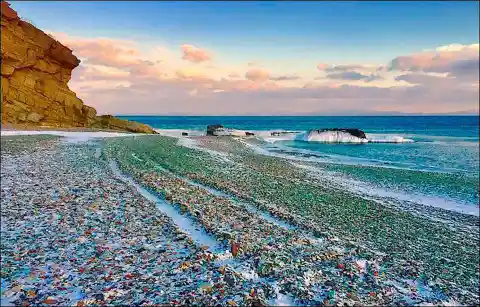
Once labeled a hazard because of its use as a dumping ground for broken glass and porcelain, over time nature righted the wrongs and slowly but surely smoothed the little shards and pieces into pebbles. The area is nowadays protected, and a must-see that brings tourists from all over the world to see the beautiful, multicolored beach. Just be sure you're wearing shoes!
Teotihuacan - Mexico
Located just a little northeast of Mexico City you will find the ruins of Teotihuacan. This colossal complex of temples and pyramids was the greatest city in the Americas before it collapsed under mysterious circumstances over 14 centuries ago.

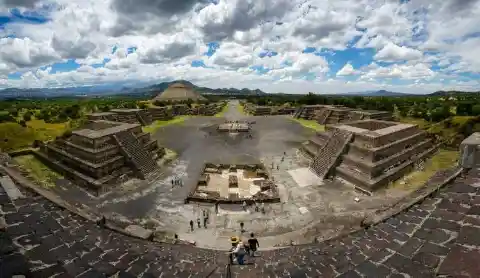
Besides its imposing appearance even today, archaeologists have discovered that the layout of the ancient city also follow a very strict pattern: The Pyramid of the Sun, Temple of Moon, and Temple of Quetzalcoatl align with the stars in Orion´s belt, hoping to reflect the design of the heavens.
Kraków - Poland
When you first read about Wieliczka, a salt mine in Kraków, Poland, you might be skeptical about it... Where's the fun in visiting an ancient salt mine? But you'd be surprised! As it happens, upon descending over 300 yards down into the underground, you'll realize it was well worth the trip. Aside from mining salt that has been used for over 800 years, the miners did some other really cool things done there.
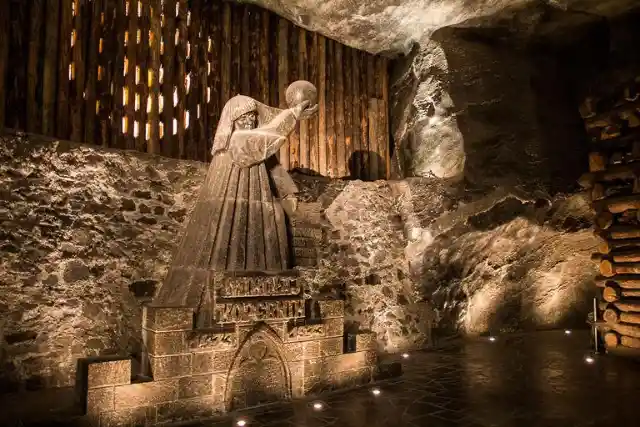
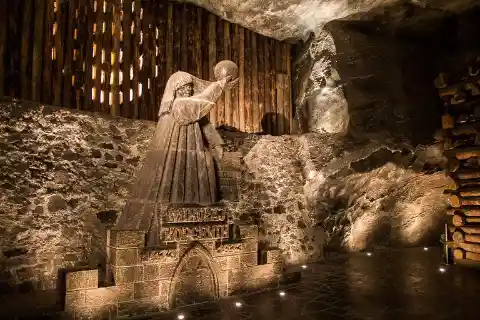
Ever since the time they started mining, back in the 1200s, the workers, as a hobby, turned the salt mine into an otherwordly sight. They carved majestic, intricate designs and sculptures out of the salt rocks. And their effort didn't go to waste, as the salt mine is now a historical site, where their amazing masterpieces are still on full display, often visited by contemporary sculptors for further contributions!
Pohnpei - Micronesia
In the isle of Pohnpei, Micronesia, you will find the ruins of the city of Nan Madol, known by many as "The Venice of the Pacific," while others mostly prefer to compare it to Atlantis. As it happens, among more than 30.000 inhabitants, none of them claim to be living descendants of the fallen Saudeleur Dynasty, that once ruled there.

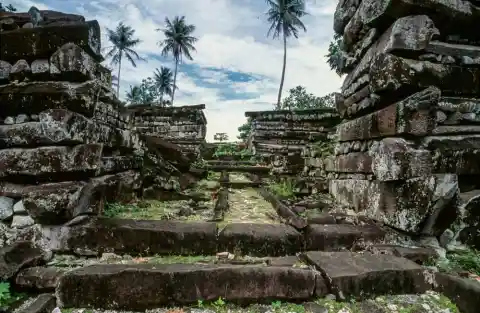
Legend says that a pair of wizards and a flying dragon were the ones to create this city, a story which, along with the ethereal and fantastic look of the ruins, is more than enough to lure and captivate visitors from all over the world and even inspiring some, like the renowned supernatural author H.P. Lovecraft, who set some of his works in Nan Madol.
Naours - France
A little bit over 2 hours away from Paris, just off the Somme river, you will find this picturesque hamlet in Naours, France. Seemingly a quiet, peaceful country town, Naours has some secrets just below the surface, thanks to its role in World War I. Times were dire, and the Allied forces needed a safe place to protect and hide not only themselves but also the innocent civilians, from enemy attacks. The solution came as a rather straightforward but, nonetheless, crazy idea: An underground city!
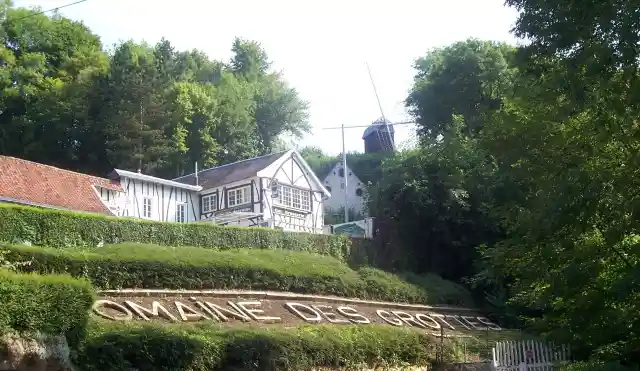
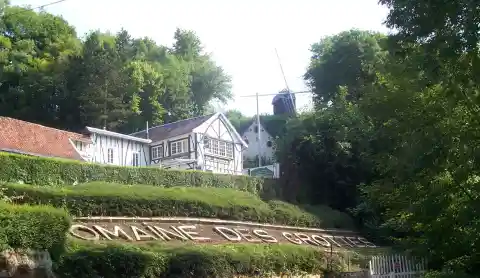
Over 300 rooms are connected by rock tunnels, safely hidden underground, where the townsfolk waited out for the nightmare to end. The names of many Allied soldiers can be seen scratched on the walls if you take the tour to this underground haven.
Urfa - Turkey
Back in 1963, archaeologists unearthed a buried structure in the Anatolia region of Urfa, Turkey. Its pillars are still standing which is impressive enough, but what shocked them to the core was the site's age! According to their calculations, this structure dates back to the tenth millennium B.C., in other words, over 12.000 years ago!
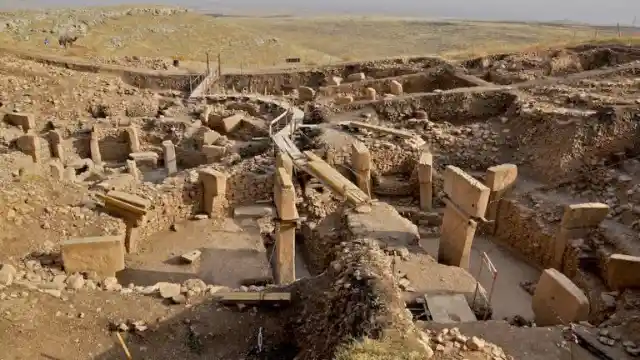
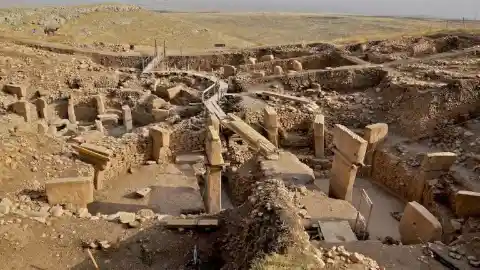
A few decades later in 1996, German archaeologist Klaus Schmidt excavated further on the site, known as Göbekli Tepe. Upon his discovery of the layout and artifacts within, he discerned that the structure was in fact a temple, which would make it the earliest known place of worship on Earth. Sadly, Schmidt passed away recently, so the mysteries of this temple might never be fully revealed, the biggest question being who built it in the first place.
Begich Towers - Alaska
This little town in Whittier, Alaska, is like none you've ever seen before... Because you won't even have to leave the building where you're staying at. We know the theme of this article is to leave your hotel and look for the hidden gems... But: What happens when your hotel IS the hidden gem? With a population of 214 citizens, which is not unusual for small Alaskan towns, what makes this one different is the fact that everyone lives in the same building complex. Everything is their... school? Police department? Supermarket? Check, check, check.
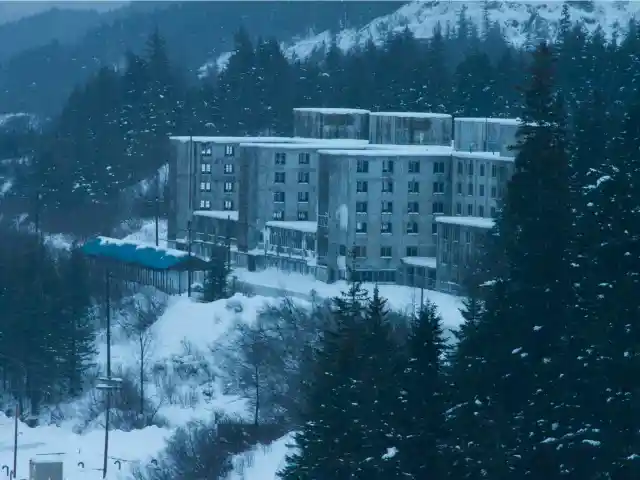
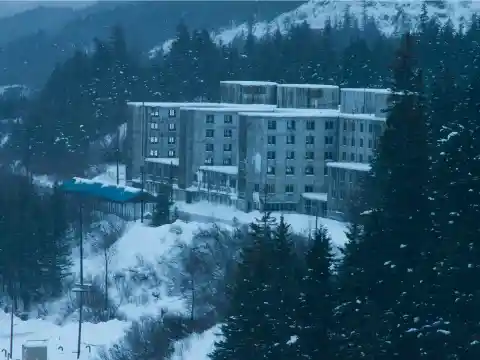
The Begich Towers are open for tourists during the daytime, and one of its residents, June Miller, owns a bed and breakfast on the topmost floors. The views are just gorgeous, and people keep pet reindeer in a pet outside. If you are looking for a completely different hotel experience, then this one is just for you!
Hand In The Desert - Chile
We now go from cold Alaska to the desert zones of Latin America. More specifically, the salt flats of Atacama Desert, Chile. And what's so special about this salt desert you wonder? Well, maybe looking at this gigantic hand coming out of the ground will give you the answer.
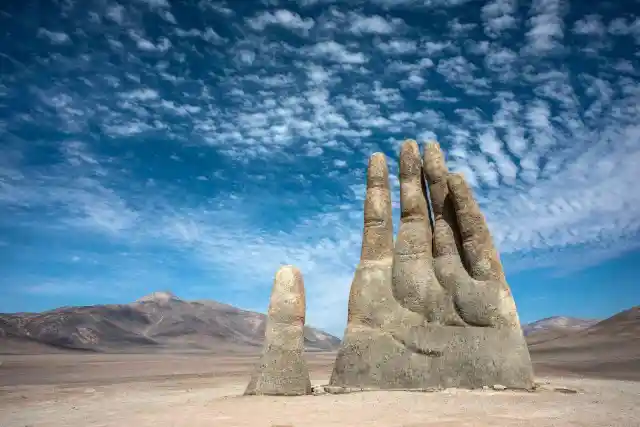

Maybe not as popular and well-known as the gorgeous Salar de Uyuni, "the mirror of the world," in Bolivia, but equally impressive, this enormous sculpture of a hand was created by artist Mario Irrarázabal back in the 1980s, and many adventurers and curious tourists alike have trekked to get a glimpse of this masterpiece.
Cat Islands - Japan
Japan has not one, nor two, but three cat islands. Locals believe that feeding and caring for the hundreds of cats that live there will bring them good fortune, and that's why they are allowed to stay. Japan truly loves cats, and this holds even more truth when you go to any of these islands, wherein the cat to person ratio is about 6 to 1!
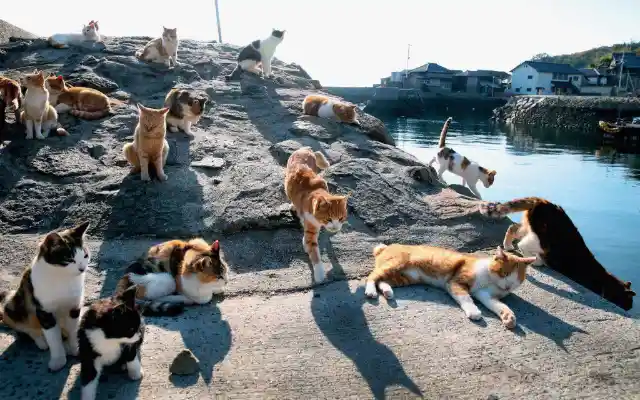

It's also fair to mention that these islands are not heavily inhabited. While they used to have a larger population, nowadays the average ranges around 100 people, and in the case of Aoshima, the most famous of the Cat Islands, the population is... A mere 20 people! That gives us roughly 120 cats. This island is, by the way, about one mile long.
Socotra Island - Yemen
If you are looking for scenery that looks out of this world, then we definitely can recommend Socotra, a small archipelago composed of four islands off the coast of Yemen, in the Indian Ocean. People from all over are drawn towards the strange flora that is iconic to these islands, just like the Dragon blood trees, pictured below.
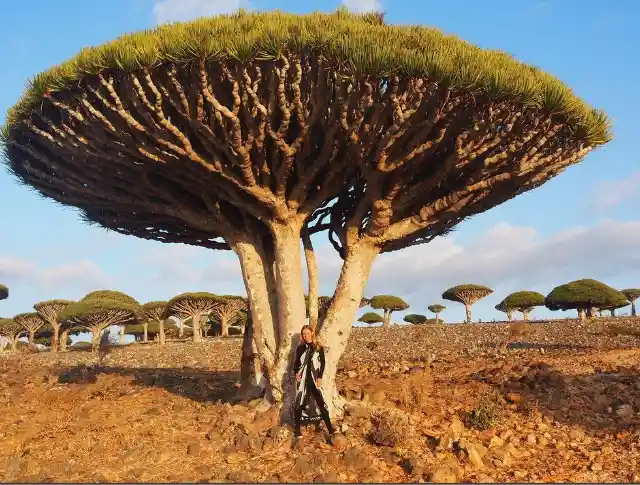
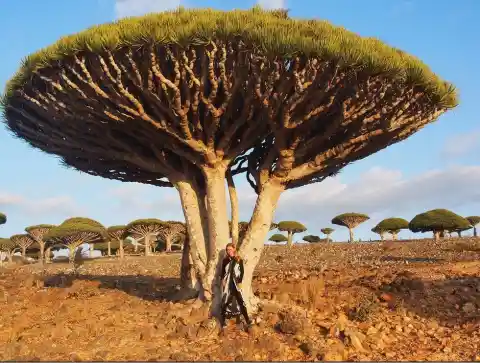
Just like the Galapagos, this island works as a unique environment, for over 800 types of plants, from which a third of them are endemic to this small archipelago. It also has a lot of reptile species, of which 90% of them are unique to this place, along with a brimming amount of reef-building corals, fish, crabs, lobsters and shrimps, that surround these incredible islands.
Sagrada Familia - Spain
The Sagrada Familia, which means the "Holy Family" in Spanish, is an unfinished Roman Catholic minor basilica, designed by late architect Antoni Gaudi. The project started in 1882, until the architect, Francisco de Paula del Villar, resigned a year later. Ever since, and up to his death in 1926, Gaudi was in charge of the project. Because of this, and up to this day, the general looks of the basilica have a notorious mishmash of architectural styles, which looks even crazier once you get inside!
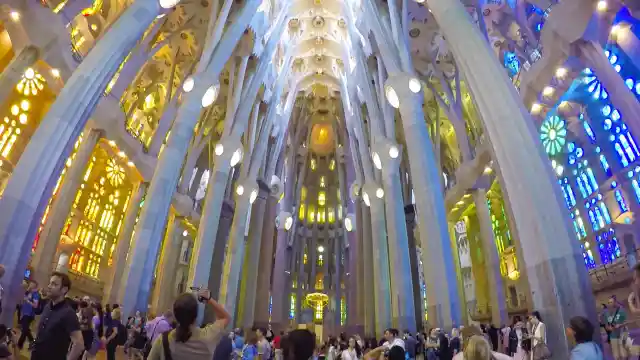
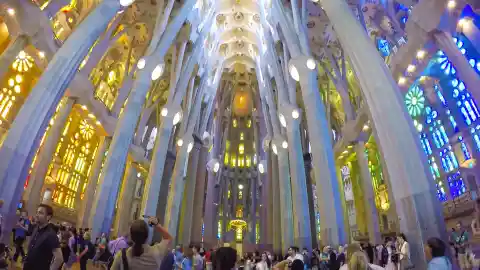
At the time Gaudi passed away and was buried in the crypt of this very own basilica, the building was only 1/4 completed, and the project had to continue relying on private donations. Slowly but surely, the construction continued, until it was put on hold at the beginning of the Spanish Civil War, wherein the original plans and models were broken, and only recovered partially back in the 50s. By the year 2010, it was said that the construction was over 50% completed, and what's more, it was consecrated by the Pope and proclaimed a minor basilica. It is also a part of the UNESCO World Heritage Site.
Nazca Lines - Peru
Even today, archaeologists and historians alike are baffled as to how exactly the famous Nazca Lines came about. Only visible from high up the sky, these ancient lines, spread over hundreds of lines, clearly depict creatures that can be easily identified, for example, a monkey and a spider.
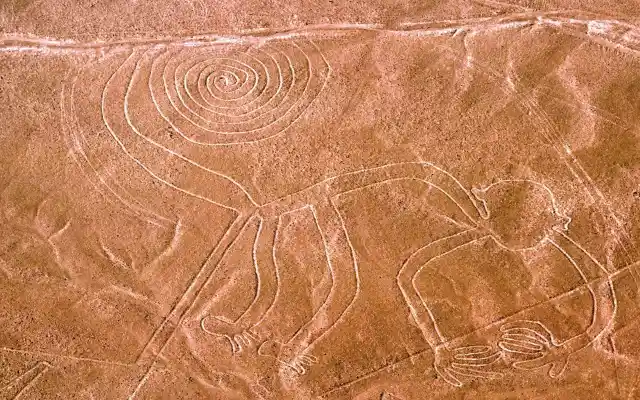
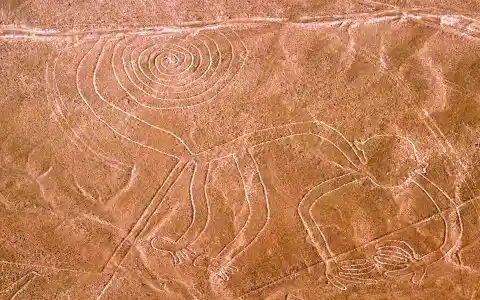
Made by carving deep in the soil of the Nazca Desert in southern Peru, these geoglyphs (large designs produced by carving on the ground or rock) are said to have been done between 500 BCE and 500 CE, or, in other words, are between 1500 and 2500 years old. Really makes you wonder how the Nazca People back in the day managed to do them, as they are at most over 300 meters long, and are only fully visible when over 500 meters from the ground.
Lake Hillier - Australia
Located at the edge of Middle Island, the largest landmass of the Recherche Archipelago south of Western Australia, Lake Hillier will instantly make you look twice, as its most notable feature immediately comes to mind: The lake is completely pink! How could this be possible?
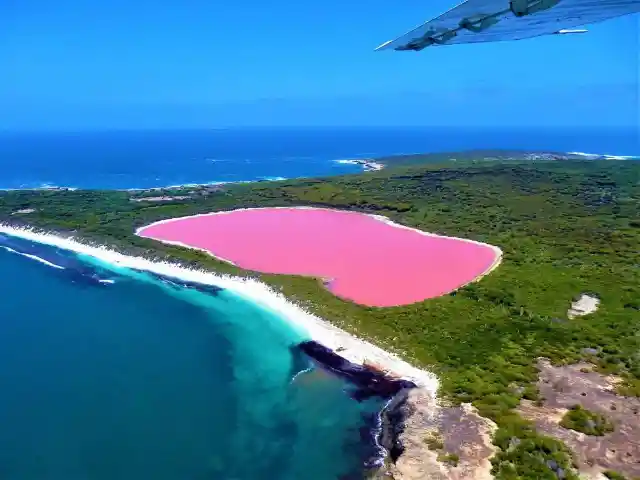
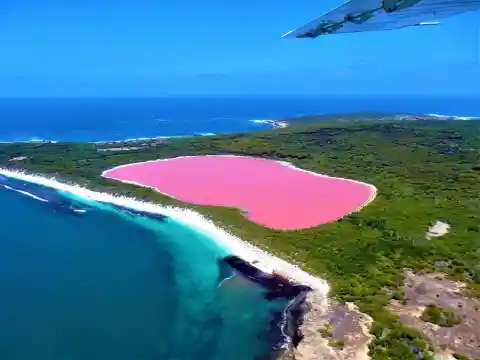
Separated from the deep and crystalline blue of the Southern Ocean by a thin strip of land, the picture looks all the more striking, but this lake is completely and absolutely natural. This saline lake is 600 meters long and 250 meters wide wide, and the culprit behind the water´s color is the organism Dunaliella Salina. There is no life on this lake other than this organism, and swimming is technically permitted, but needs proper permissions and control, not to mention the lake itself is somewhat tricky to get to.
Spotted Lake - Canada
We now move to another lake but on the opposite side of the World. Maybe not as flashy as the previous entry, but still quite remarkable: This is the Spotted Lake, located in British Columbia, Canada. When summer comes, a multitude of mineral pools emerges as the water above them evaporates, forming quite a curious pattern on the surface.

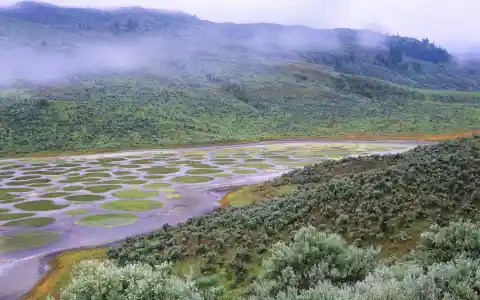
Originally named by the First Nations of the Okanagan Valley as Klikuk, this lake has been for many centuries revered as a sacred site, used mostly for the medicinal purposes of the minerals contained within. Despite this, minerals were taken for military resources during World War I. Later on, the area came under the control of the Ernest Smith Family, who attempted to turn it into a natural spa. To prevent further abuse of the area, the First Nations decided to purchase the land, which they finally managed to do by the year 2001. Now, tourists are advised to tread with care in the area.
Tianzi Mountains - China
These scenic dagger-like mountains, sharp and menacing yet inviting, and more often than not covered by a curtain of fog, have inspired many to use them in their movies and stories, a recent example being James Cameron´s Avatar. These are the Tianzi Mountains, located in Zhangjiajie, in the Hunan Province of China.
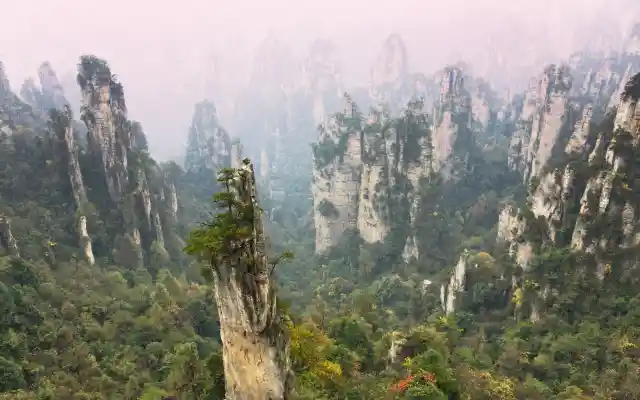

Maybe is the adventurous look, or the exotic setting, or even the eerie feeling they bring, but whatever it is, these incredible mountains, whose highest peaks surpass 4,000 feet, are already incredible to look at through a picture, so being there will definitely feel like an incredible experience!
Pamukkale - Turkey
Just by looking at the picture, I bet you'll be packing already - and with good reason! This beautiful place is not only as amazing as it looks like, but it's also a UNESCO World Heritage site. Located in Denizli, southwest Turkey, this gorgeous place is called Pamukkale, Turkish for "Cotton Palace."
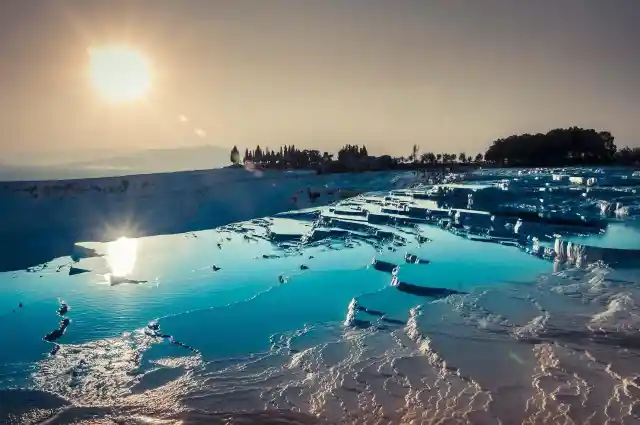

Ever since the year 800 BC, people have flocked to this place to enjoy and benefit from its thermal springs, which are natural fountains of warm water, used for therapy and relaxation. Naturally distributed like terraces, they also give its visitors an amazing view of the surroundings, and at the peak, you will find the ruins of Hierapolis, an ancient Greek city that now hosts a museum.
Pozo De Las Animas - Argentina
"Souls´Well," as it translates, located within Valle de Los Molles in the province of Mendoza, Argentina, is the name of two giant depressions (originally just one), which were formed by the erosion of underground rivers. Considered a natural spectacle, they are 300 and 265 meters wide, respectively, and about 90 meters deep.
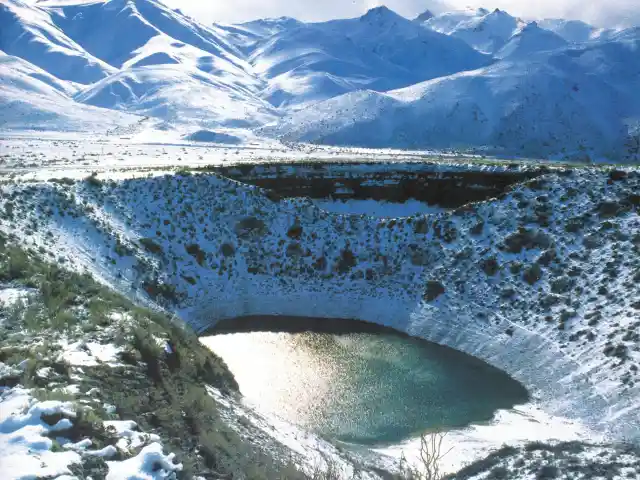
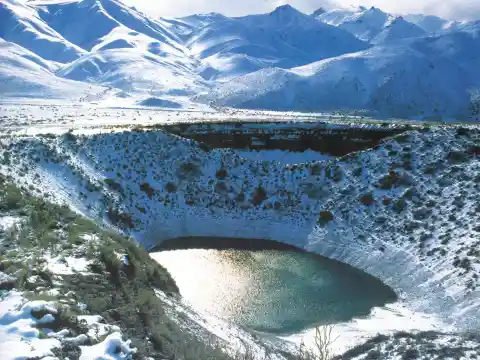
The name comes from the whistle-like sound of the always present wind, which the original habitants of these lands, the Mapuches, claim belong to the souls in pain that wander around this valley. The place is open for tourists, where they can learn more from these legends and the dark stories behind them. The area is surrounded by a light fence, so people must be careful anyway, as it's said that nothing that falls in there ever returns to the surface.
Bermuda Triangle
We all know the Bermuda Triangle. It's been depicted so often in all sorts of movies and stories that it's ingrained in our minds even today. As legend tells, all ships and airplanes that plan their routes crossing this cursed area will end up vanishing, never to be seen or heard from again.

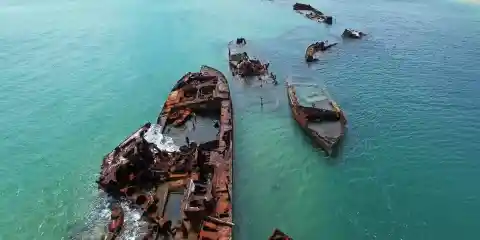
Forming a triangle between the areas of Florida, Puerto Rico, and Bermuda, this area has bred a lot of conspiracy theories behind the disappearance of ships and planes in this area, and they've only been getting crazier and crazier with each passing year, from blaming strong magnetic fields to alien abductions. So... Is this true? Who knows, maybe you´ll be the next person to brave this water and find out?
Grand Prismatic Spring - USA
You'll be happy to hear that this one is closer to your place! Who knows, maybe you could even go for a visit this weekend? We now move to Yellowstone National Park, once again honored with being an UNESCO World Heritage site, and with much to offer! But today, we will focus on the Grand Prismatic Spring.
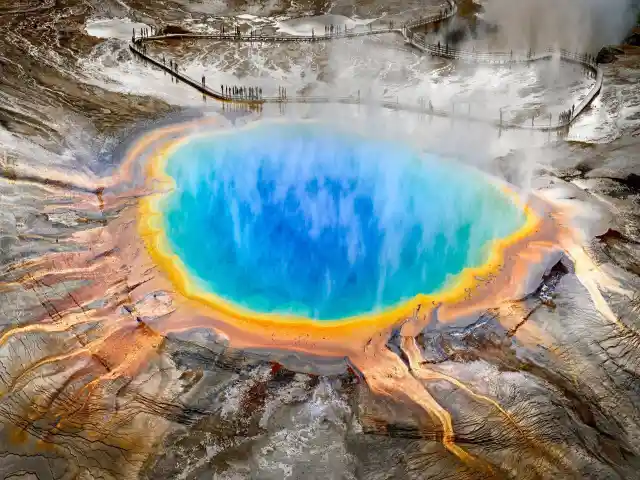
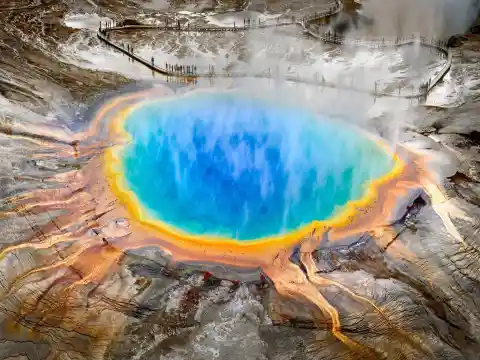
Did you know that this is the largest hot spring in the US? And third largest in the World? And what's more, if conditions are favorable, you will see its rim divides light into a rainbow prism. Of course, keep in mind that this hot spring is indeed hot, so please be careful and don't try to cross the fences, no matter how pretty and inviting this spectacle looks.
Giant´s Causeway - Northern Ireland
Making a quite peculiar looking scenery, the Giant's Causeway is made up of about 40,000 interlocked basalt columns, which were the result of an ancient volcanic fissure eruption. Located in County Antrim, Northern Ireland, you can bet there is definitely a much cooler legend on how this place was originally formed.
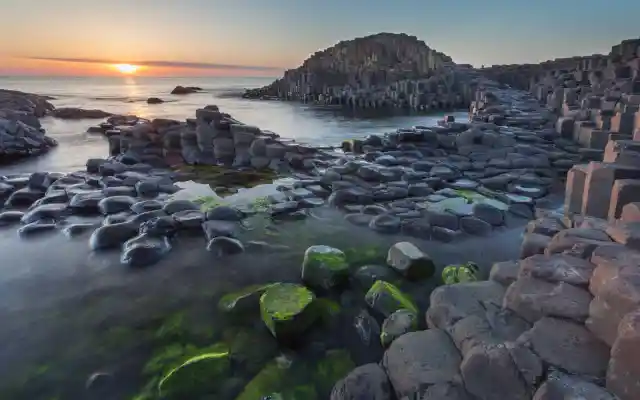
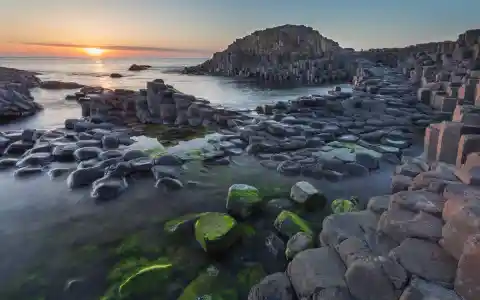
According to a legend, this place was built long ago by an ancient giant, Fionn Mac Cumhaill, looking to escape from a much larger foe, Scottish giant Benandonner. Now, of course, the legend can differ from region to region and have different endings. This too was declared a UNESCO World Heritage site back in 1986.
Buzludzha Monument - Bulgaria
After seeing this picture you probably think this is a prop for a movie or even the entrance of a Space Museum, but actually, this is neither related to science/space nor technology at all. What you are looking at is a dome, more specifically a (currently) dilapidated Communist monument, by the name of The Buzludzha Monument.
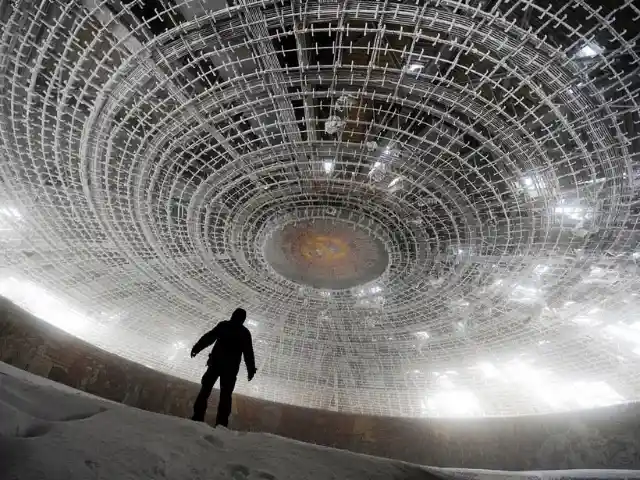
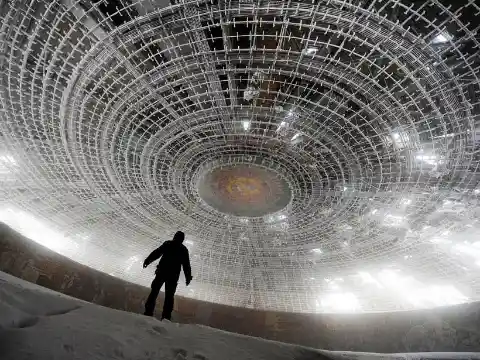
Located in Bulgaria, the Monument House of the Bulgarian Communist Party, during its prime, was decorated with banners featuring Karl Marx and Vladimir Lenin. It was built on Buzludzha Peak to commemorate the events of 1891. It was ultimately abandoned in 1989 after the fall of the Soviet Union, and it now lies derelict.
Badab-e-Surt - Iran
Last, but not least, we have Iran´s answer to Turkey's Cotton Palace: Badab-e-Surt. As the description implies, this is also a place filled with natural hot springs, where you can rest and relax while enjoying a wonderful scenery, but with an important difference: The water is dyed red.

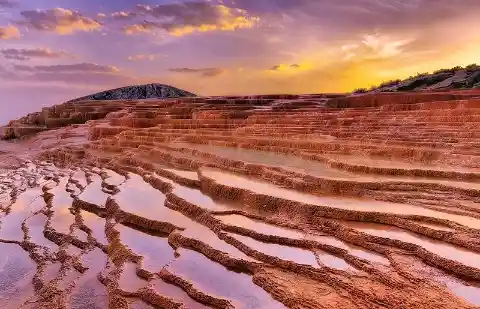
The reason behind the color of the water is simply the high presence of iron carbonate. The place is located in northern Iran, 95 kilometers south of the city of Sari, close to Orost Village. But if red water is not your thing, don't worry! These springs have two sources, one has high iron content and is the culprit for the red-orange dye, while the other is much clearer and its waters help with ailments such as rheumatism and skin conditions.
Red Beach - China
China has many wonderful sights to offer. If you loved the Glass Beach from the first entry and wish to see more unusual places to take amazing pictures, we present you: The Red Beach.
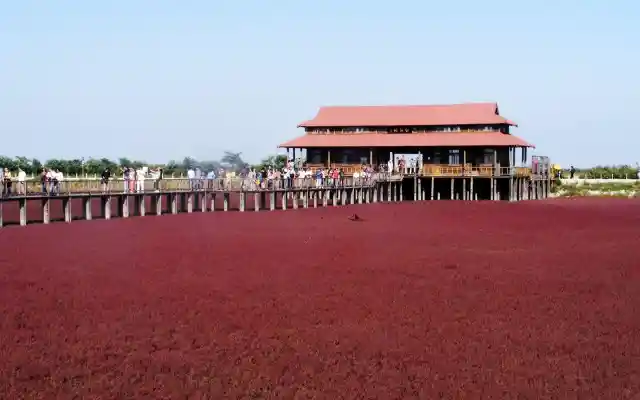
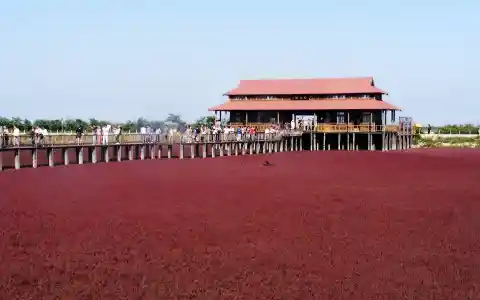
As you can imagine, the color of the water has a secret behind it: When fall comes, a type of seaweed called Sueda changes color to a dark red and completely covers the water all around the beach. Sadly, you cannot swim in these waters, but there are platforms for those who wish to enjoy the view and get some pictures. The beach is located in Dawa County, Panjin, Liaoning, China.
Thor’s Well - Oregon
Another for those who could use a closer, cheaper weekend plan: Located on the Oregon Coast, there is this incredible sinkhole known as Thor´s Well! Honestly, seeing a photo cannot do it justice, so make sure to watch a video, or even better, go see the real thing!
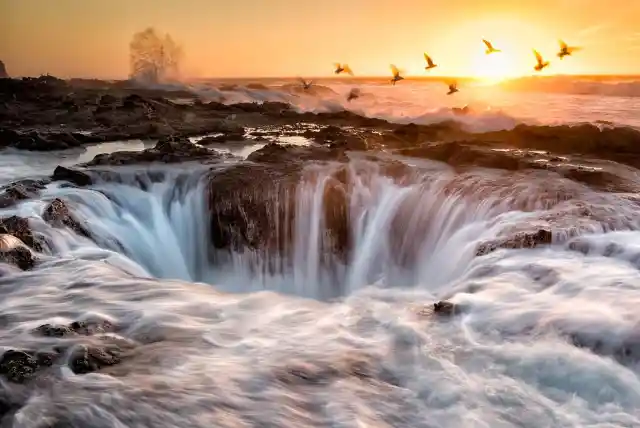
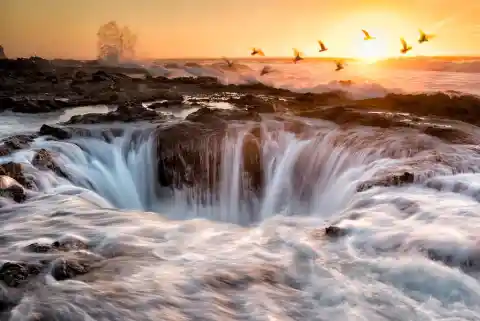
Once the sinkhole fills up with a large quantity of seawater, it will shoot it straight up into the air. And then it happens, the reason why it's called Thor´s Well... It makes such a loud sound when that happens that one would swear it was made by the God of Thunder himself! And because of this, you might want to avoid getting just too close.
Zhangye Danxia Landform - China
We move to China once more, and, if you thought the extremely pink Lake Hillier a few entries ago was photoshopped, then you are going to lose your mind when you realize this next location is completely natural as well. These are the mountains of Zhangue Danxia, and yes, they are real.*
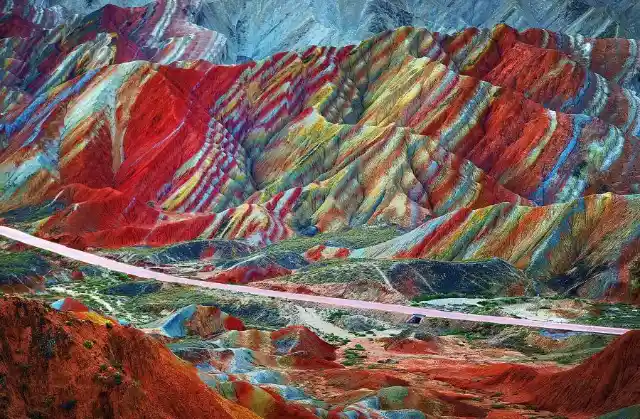
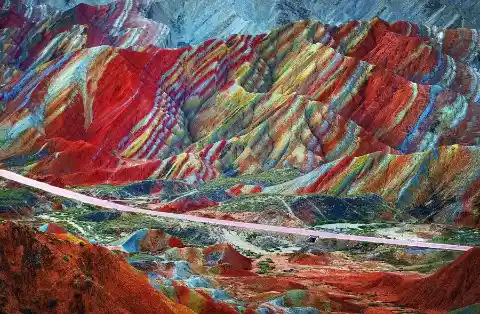
You may be wondering how on Earth something so gorgeous and colorful can exist naturally, but the explanation is quite simple: The mountains, which are several hundred meters tall, are layered deposits of sandstone and other minerals, each attributing a different color to the ground. The mountains were then created when the same tectonic plates as those that created the Himalayan range. The weather over the next millions of years did the smoothing, shaping and carving, and this was the result!